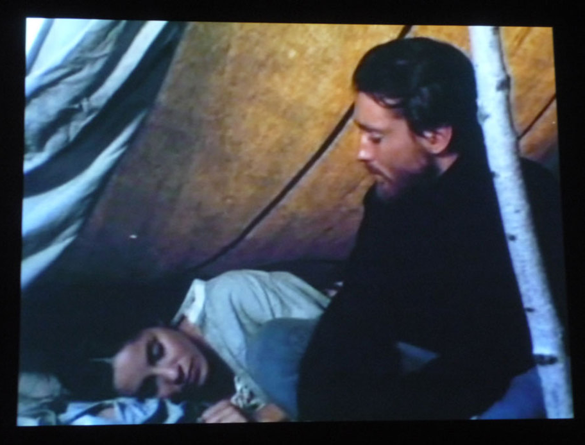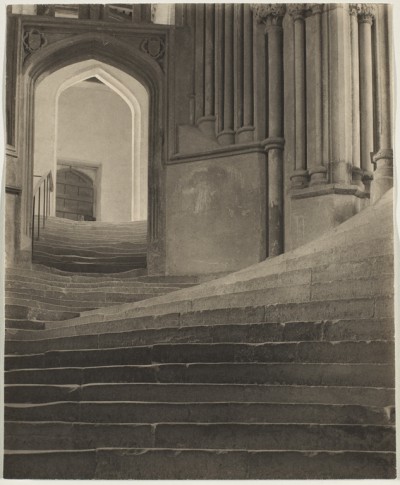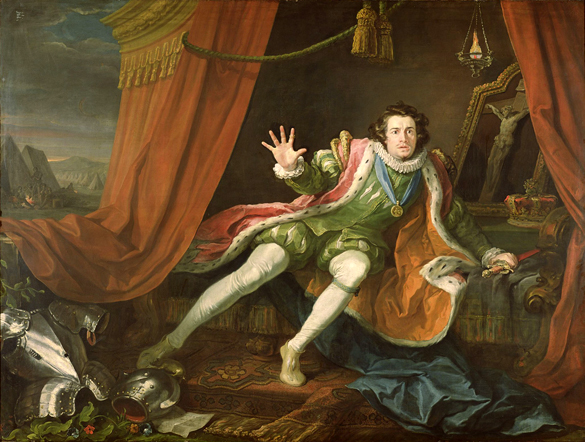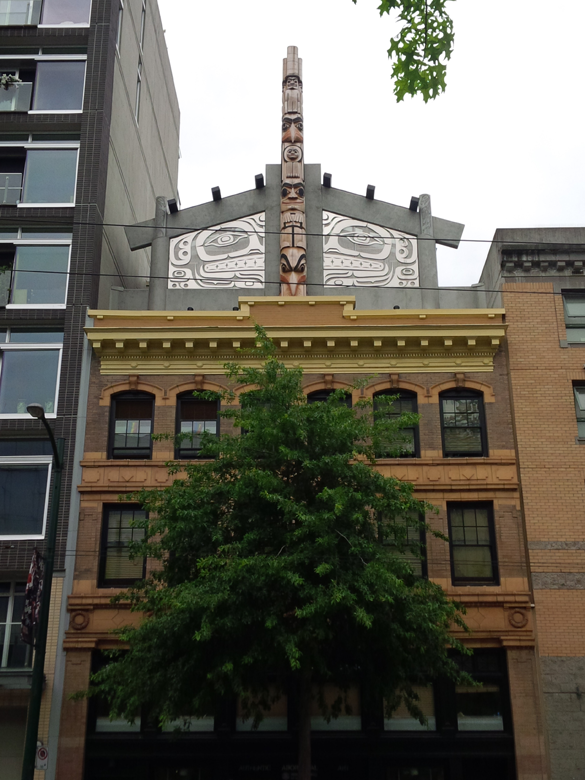Friday, March 11, 2016 – 2:30 p.m., 412 St. Patrick’s Building

Joyce Wieland, still from the film ‘The Far Shore’ (1976) (http://www.aci-iac.ca/joyce-wieland/key-works/the-far-shore)
“Joyce Wieland and Early Adventures in Ecofeminism”
by Sheena Ellison, Independent Scholar
This talk will analyze Joyce Wieland’s feature-length filmic work The Far Shore (1976) in relation to ecofeminist theory that was emerging around the time that the film was made. Wieland’s film is a melodrama centered on a fictionalized romance between a French-Canadian woman and a mysterious plein-air landscape painter named Tom. This talk will turn to ecofeminist scholarship to understand the relationship between misogyny and environmental degradation that Wieland develops through the film.
==========================
==========================
Previous sessions in the 2015-16 series…
Friday, September 11th, 2:30 p.m., 412 St. Patrick’s Building
“Frederick H. Evans: His Life, Work and Times”
by Ann Thomas, Senior Curator of Photographs Collection, National Gallery of Canada
Frederick Evans, the subject of the current exhibition at the National Gallery of Canada, The Photographs of Frederick H. Evans: Luminous and True (until September 14), was not only a gifted photographer, who was described in 1903 as standing alone in architectural photography, but also very much engaged in the fertile and transformative scientific, artistic and ecclesiological culture of late 19th century Great Britain.
This talk will focus on his contribution and place within the history of photography of late nineteenth century England, particularly in relation to his exquisite platinum prints of Gothic cathedrals and the manner in which his photographs reflect the complex intellectual climate of his time.

Frederick H. Evans, Wells Cathedral: A Sea of Steps, 1903, platinum print. National Gallery of Canada 42874.
===========
===========
Friday, November 20th, 2:30 p.m., 412 St. Patrick’s Building

William Hogarth, David Garrick as Richard III, c. 1745, oil on canvas .Walker Art Gallery, Liverpool.
“Hogarth and History Painting”
by Mark Phillips, Professor, Department of History and ICSLAC, Carleton University.
To examine Hogarth’s art thought the lens of history painting must seem a peculiar choice, but I hope to show that Hogarth offers a particularly instructive example of the unique status of history painting as well as of it corresponding fragility. Equally, Hogarth worked in a number of hybridized genres, where he found opportunities to stretch the boundaries of history painting while retaining many of its attractions. More than his “histories,” these mediated genres would point the way to the future of history painting in Britain. Theatre painting in particular played this role for Hogarth.
===========
===========
Friday, January 22, 2016 – 2:30 p.m., 412 St. Patrick’s Building

“Architectures of Renewal: The Indigenous Architectural Landscape of Canada”
by Daniel Millette, Adjunct Professor, School for Studies in Art and Culture – Art History
In spite of several hundred years of difficult challenges that include culturally destructive colonial strategies, many indigenous communities are experiencing a period of self-actualized revitalization whereby “culture” is openly celebrated and outwardly presented. This is apparent through art, language and tradition, all manifested through a number of community facets, including the topic of this talk: planning and architecture. Many traditional tenets related to environmental design are shared by First Nations; respect for the land, for instance, is common to all indigenous peoples, as are consideration for environmental consequences, traditional land-use planning, and architectural design features such as cultural representations through tectonic assemblies that tell a story and contain mnemonics related to the culture from which it emanates. Indeed, and in sharp contrast to John May’s assertion that “traditional vernacular architecture is disappearing”, a surge of indigenous-initiated environmental design initiatives has emerged in what is now Canada, much of it as original land use combinations and unique architectural typologies brought about by new, or renewed needs . This is design that derives from beyond place and program; it stems directly from cultural consequences. In addition to traditional spaces that are actively and continuously re-built, new spaces of cultural interaction, places of healing, and buildings for traditional practice, among others, are being designed throughout the First Nation landscape. At times designed by outside planners and architects, while in other instances designed by community members, the set of spaces remains undocumented and underappreciated. Indigenous communities persist within sets of traditional design practices that extend to the distant past, albeit not necessarily obvious to the outside eye. Thus when added to the vast ethnographical, archaeological and historical record, the whole makes for a rich corpus to understand culture within the broader Canadian planning and architectural sphere. Based on a forthcoming book on the subject, this talk will highlight the changing indigenous architectural landscape of Canada.
===========
===========
Friday, February 5, 2016 – 2:30 p.m., 412 St. Patrick’s Building

Publicity still from lost film ‘The Amazons’ (1917)
“Girls Will Be Boys: Cross-dressed Women, Lesbians, and American Cinema 1908-1934”
by Laura Horak, Assistant Professor, Film Studies, SSAC, Carleton University
While many assume cross-dressing to be inherently transgressive, my research shows that the American film industry actually used cross-dressed women to achieve respectability in the 1910s and early 1920s. Only in the late 1920s, when the popular press took up the subject of lesbianism, did the film industry exploit cross-dressing’s new sense of transgression. This presentation draws from over ten years of research during which I discovered more than 300 American silent and early sound films featuring cross-dressed women.